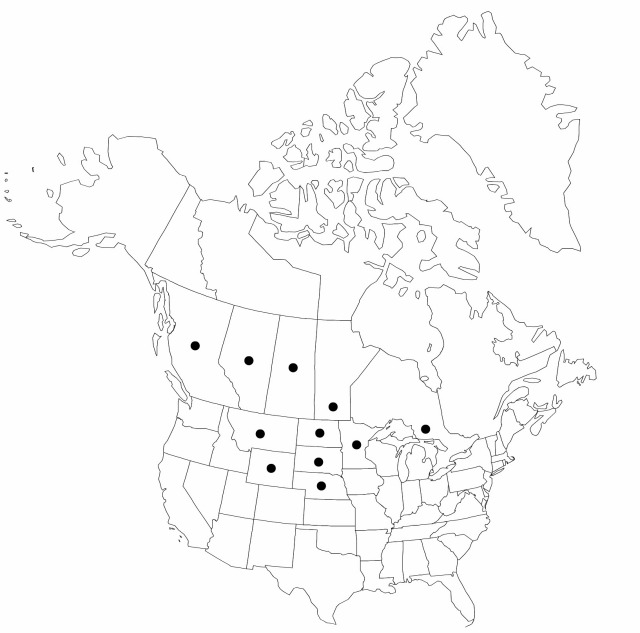Carex xerantica
Bot. Gaz. 17: 151. 1892.
Plants densely cespitose. Culms 15–70 cm. Leaves: sheaths adaxially white-hyaline, summits U-shaped, occasionally shortly prolonged beyond collar; distal ligules 0.8–1 mm; blades 3–5 per fertile culm, often folded, 3.5–20 cm × 1–3 mm. Inflorescences stiffly erect, open or spikes loosely aggregate, if open, sometimes arching, whitish to pale brown, 1.5–5 cm × 5–10 mm; proximal internode 5–10 mm; 2d internode 4–8 mm; proximal bracts scalelike to bristlelike, shorter than inflorescences. Spikes 3–5, distant, distinct, ovoid-ellipsoid, 7–14 × 3–8 mm, base tapered to attenuate, apex acute. Pistillate scales whitish to yellowish, with 1-veined, green to gold midstripe, or white almost throughout at maturity, ovate, 4.4–6 mm, longer and as wide as and concealing perigynia, margin hyaline, 0.3–0.7 mm wide, apex acute. Perigynia essentially erect, pale yellowish brown, often with green beak, 8–10-veined abaxially, veinless or indistinctly 8–10-veined adaxially, ovate to broadly ovate, plano-convex or thickly concavo-convex, 3.8–4.8 × 1.4–2.2 mm, 0.5–0.6 mm thick, margin flat, including wing 0.2–0.4 mm wide, ciliate-serrulate at least on distal body; beak white-hyaline at tip, flat, ± ciliate-serrulate to the bidentate apex, abaxial suture inconspicuous or white-hyaline, distance from beak tip to achene 1.4–2.2 mm. Achenes ovate-oblong, 1.7–2.1 × 1.2–1.4 mm, 0.5–0.6 mm thick. 2n = 68.
Phenology: Fruiting late spring–early summer.
Habitat: Dry grasslands, rock outcrops, talus slopes
Elevation: 300–2100 m
Distribution

Alta., B.C., Man., Ont., Sask., Minn., Mont., Nebr., N.Dak., S.Dak., Wyo.
Discussion
Carex xerantica is a rather local, northern species of the Great Plains which has a distinctive pale silvery aspect to the inflorescences.
Much too broad a range has been ascribed previously to this taxon. Reports from the Rocky Mountains are based mostly on misidentifications of Carex petasata and C. tahoensis, both of which differ in having reddish brown pistillate scales and larger perigynia that are distinctly veined adaxially.
Selected References
None.
